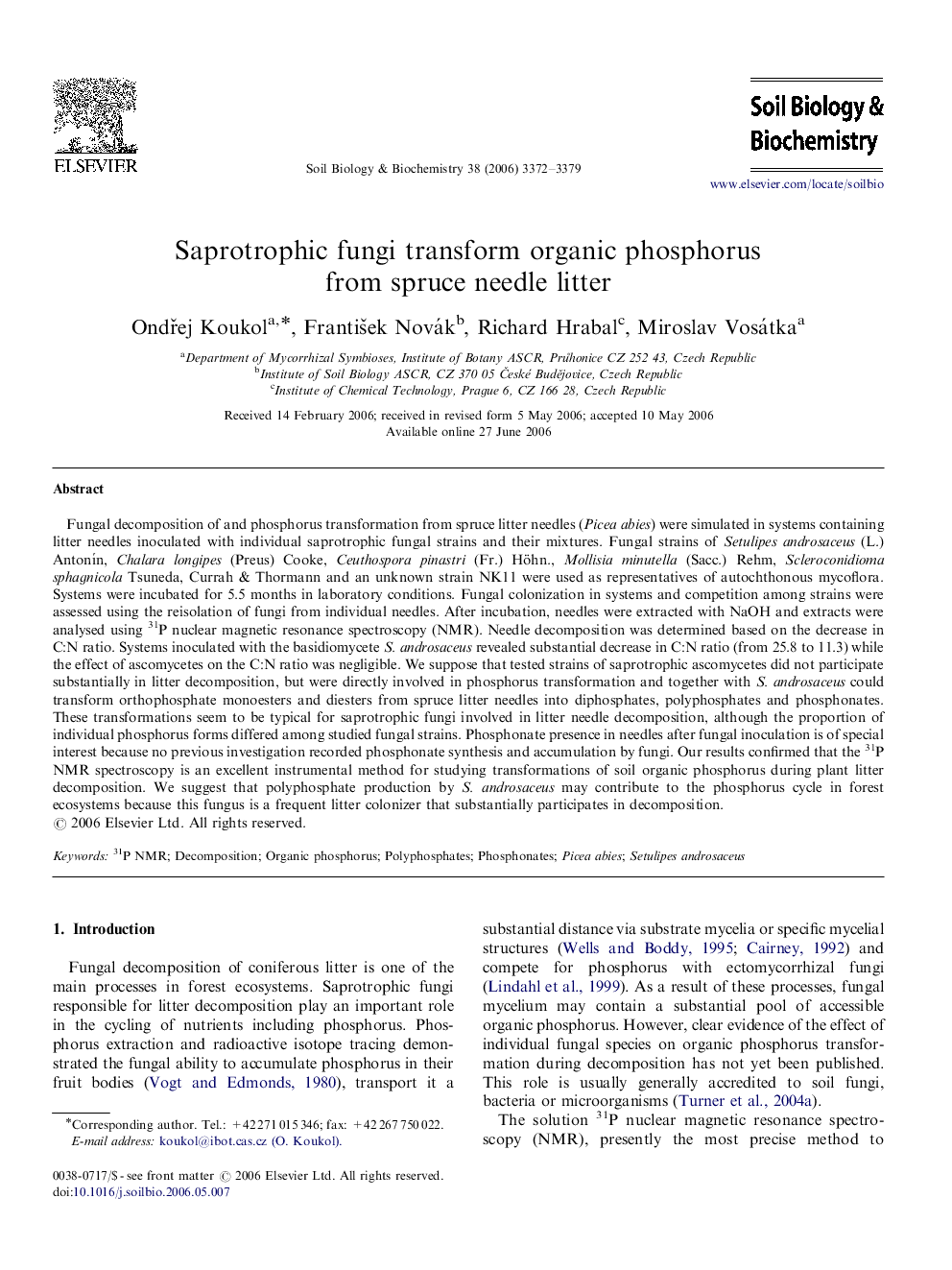| Article ID | Journal | Published Year | Pages | File Type |
|---|---|---|---|---|
| 2027078 | Soil Biology and Biochemistry | 2006 | 8 Pages |
Fungal decomposition of and phosphorus transformation from spruce litter needles (Picea abies) were simulated in systems containing litter needles inoculated with individual saprotrophic fungal strains and their mixtures. Fungal strains of Setulipes androsaceus (L.) Antonín, Chalara longipes (Preus) Cooke, Ceuthospora pinastri (Fr.) Höhn., Mollisia minutella (Sacc.) Rehm, Scleroconidioma sphagnicola Tsuneda, Currah & Thormann and an unknown strain NK11 were used as representatives of autochthonous mycoflora. Systems were incubated for 5.5 months in laboratory conditions. Fungal colonization in systems and competition among strains were assessed using the reisolation of fungi from individual needles. After incubation, needles were extracted with NaOH and extracts were analysed using 31P nuclear magnetic resonance spectroscopy (NMR). Needle decomposition was determined based on the decrease in C:N ratio. Systems inoculated with the basidiomycete S. androsaceus revealed substantial decrease in C:N ratio (from 25.8 to 11.3) while the effect of ascomycetes on the C:N ratio was negligible. We suppose that tested strains of saprotrophic ascomycetes did not participate substantially in litter decomposition, but were directly involved in phosphorus transformation and together with S. androsaceus could transform orthophosphate monoesters and diesters from spruce litter needles into diphosphates, polyphosphates and phosphonates. These transformations seem to be typical for saprotrophic fungi involved in litter needle decomposition, although the proportion of individual phosphorus forms differed among studied fungal strains. Phosphonate presence in needles after fungal inoculation is of special interest because no previous investigation recorded phosphonate synthesis and accumulation by fungi. Our results confirmed that the 31P NMR spectroscopy is an excellent instrumental method for studying transformations of soil organic phosphorus during plant litter decomposition. We suggest that polyphosphate production by S. androsaceus may contribute to the phosphorus cycle in forest ecosystems because this fungus is a frequent litter colonizer that substantially participates in decomposition.
